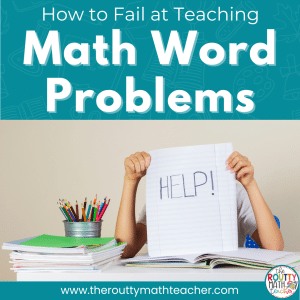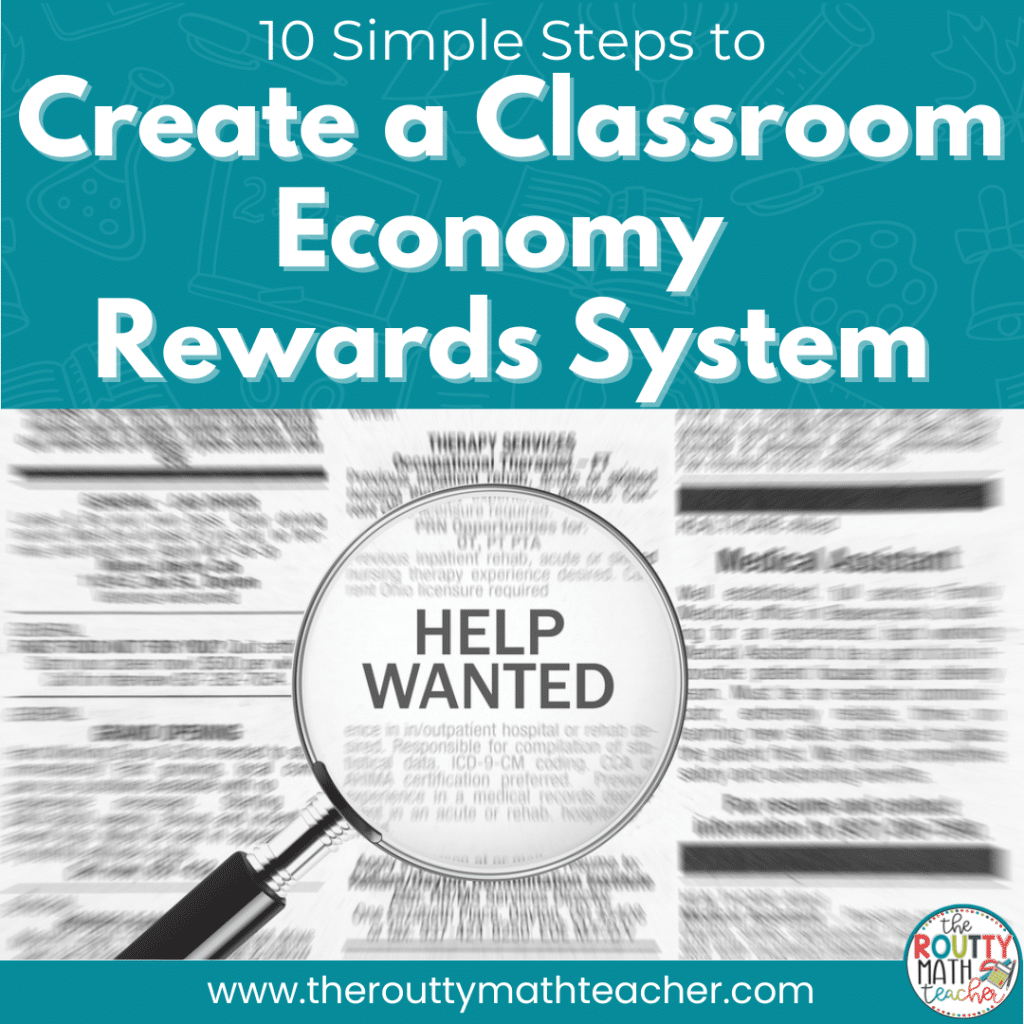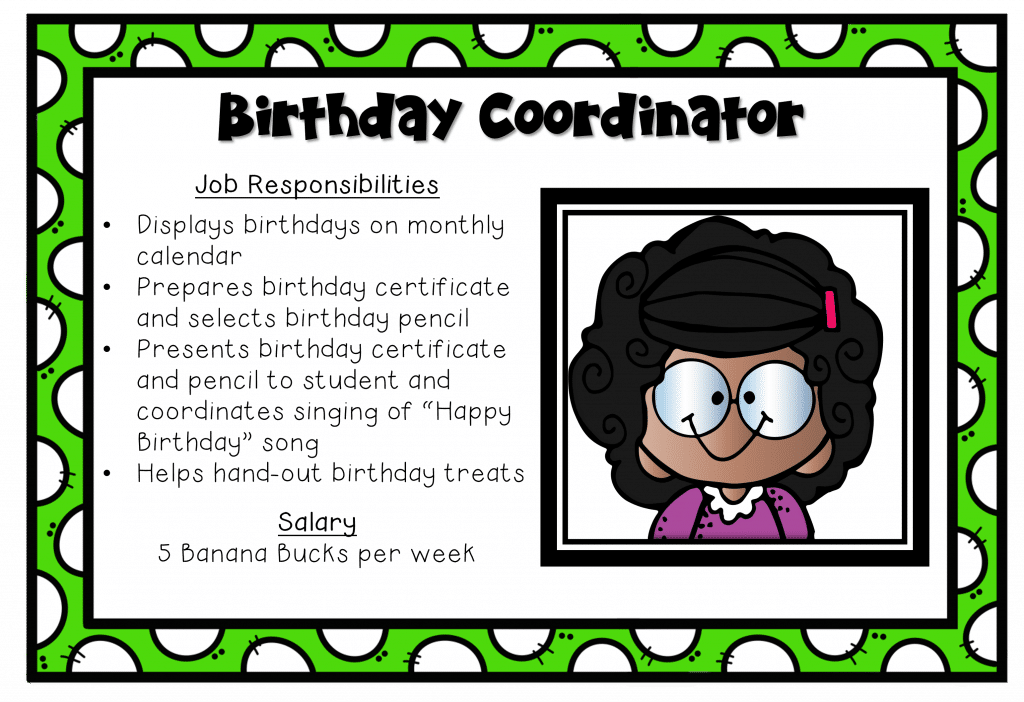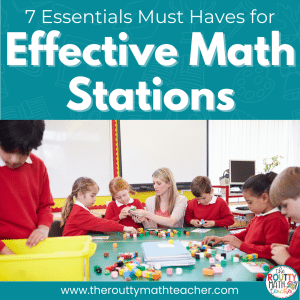
Classroom Economy Reward System

As teachers, it’s important to help our students understand how the world works. The classroom economy reward system I share in this post is one that has served me well over the years and created an opportunity for me to infuse a little bit of economics into the classroom.
“Your total is $8.26,” the cashier said.
I handed the cashier a $10 bill and proceeded to look for the twenty-six cents in my wallet.
Meanwhile, the cashier entered $10.00 on the register and when the cash drawer opened, she proceeded to count out the change.
But, I wasn’t ready!
I handed the cashier the twenty-six cents and she looked at me with a puzzled look on her face.
I could tell she was confused and did not know what to do.
The register said she owed me $1.74 and she was determined to make sure that’s what I received.
But, what now?
It was clear she was not able to make sense of the situation because she couldn’t recognize that I had given her $10.26 and all she owed me was $2.
She pulled the cord hanging from the light box that tells you the register number to indicate she needed help from a manager.
—
Math in the Real World
As a math teacher, I fully believe it’s essential to help students see how what we do in the classroom ties into the real world.
One of the ways I decided to connect math class with the real world is through a classroom economy reward system where students worked to earn a salary and then had an opportunity to spend their earnings in our classroom store and on shared experiences purchased via coupons.
The basic idea of the classroom economy reward system is that students each have a classroom job, earn classroom cash based on their job duties or for other contributions to our classroom society, and then have the opportunity to spend their cash on things they want.
How a Classroom Economy Rewards System Works
The system is designed to be pretty simple because I did not want to overwhelm myself with a system that required a lot of time and effort. Once the system was set up, it required minimal effort to run.
Here’s how I created my classroom economy rewards system:
1. Create a “Help Wanted” center in the classroom to display the classroom economy jobs with their job responsibilities and salary.
2. There are two types of jobs: nine-week jobs and weekly jobs.
- Nine-week jobs require students to complete a job application and then interview for a position. These jobs pay weekly for nine weeks and the salary is a great deal more.
- The weekly jobs are available to students who do not have a nine-week job, but they rotate weekly. These jobs do not require students to complete a job application and pay less than the nine-week jobs. They pay weekly but are typically only available every other week because all students without a nine-week job rotate through these positions.
3. Review the job postings with the class and explain that all students will have a job, either as a nine-week worker or as a weekly worker.
4. Offer the students an opportunity to apply for a nine-week job. (I usually ask each student to find some way they can contribute to our classroom and apply for at least one job so they have the experience of applying for a position.)
5. Review each application and conduct a quick interview with select students to ask follow-up questions. This will help you determine which students are the best fit for each nine-week job.
6. Make the initial selections and do some job training with each student before they begin working.
7. Students who are not selected for a nine-week job are placed in the rotation for the weekly jobs.
8. Each Friday, the banker issues the earnings to each student based on his or her weekly pay.
9. Students can then use their earnings to make a purchase, a coupon for a reward of some sort or a treasure box pick, with their earnings or save them for later.
10. After nine weeks offer students another opportunity to apply for a nine-week job. (As much as possible, I try to ensure each student gets a nine-week job at least once during the school year.)

The picture above illustrates an example of the classroom economy reward system jobs posting on my job board.
I place student pictures or a name tag next to the job responsibilities on each posting to identify the current job holder.
For the weekly jobs, I post weekly job titles and my job manager rotates the job board each week and displays a new name next to each job title.
Classroom Jobs to Use
Nine-Week Jobs
- Banker- Distributes weekly salaries
- Classroom Manager (2)- Maintain various aspects of the classroom based on teacher needs
- Birthday Coordinator- Prepares student birthday certificates and attaches a birthday pencil to give to students on their birthday
- Job Manager- Manages the job board and rotates weekly jobs
- Lunch Monitor- Takes the lunch count and records it on a campus Google doc
- Attendance Monitor (2)- Prepares folders of absent work when students are absent
- Maintenance Manager (2)- Maintains classroom cleanliness and organization
Weekly Jobs
- Teacher Assistant- Helps the teacher complete miscellaneous tasks as needed
- Library Helper (2)- Delivers books to the library for check-in on library day
- Runner- Runs errands for the teacher
- Thursday Folder Helper- Helps to stuff Thursday folders with graded work and school-to-home communication to go home with students
- Recycler (2)- Takes recycling bin to an outdoor receptacle
- Gardener- Waters classroom plants
- Noise Monitor- Maintains classroom noise during group work or unstructured times
- Computer Monitor- Turns the computers off each day
Preparing Students for the Real World
When the manager arrived on the scene, the cashier explained the situation. The manager, who seemed puzzled that the cashier was unable to make sense of the situation, looked at the cashier and said, “You owe her $2.” He handed the cashier the money, closed the cash drawer, and walked away.
To this day, I still don’t think the cashier fully understood what happened.
As educators, we can help our students develop the skills they need to be successful in the real world by providing opportunities for them to better understand how the world works. The classroom economy reward system is a fun way to provide students the opportunity to apply for and then interview for a job.
The classroom economy reward system also infuses a little bit of responsibility as students have to complete their job tasks in order to maintain their position. But, my favorite part has to be watching students spend their money on random things from the treasure box then learn to save up for a big-ticket item instead of continuing to collect junk from the treasure box for instant gratification. They learn so quickly!
Ready to get started? Download a free copy of my student job application using the form below.
Sound Off!
How do you manage jobs in your classroom?






One Response
Do you sell this classroom economy system? I am interested in trying this in my classroom.